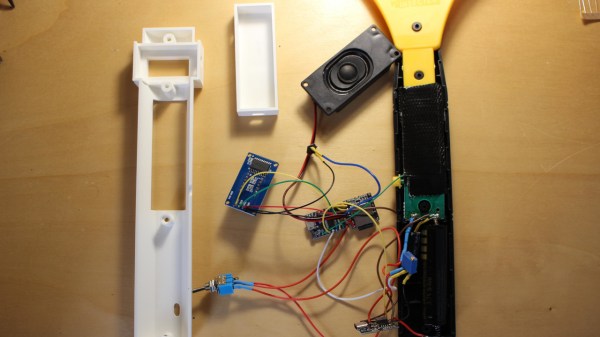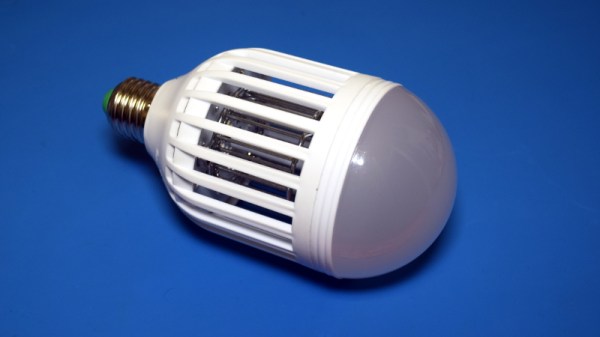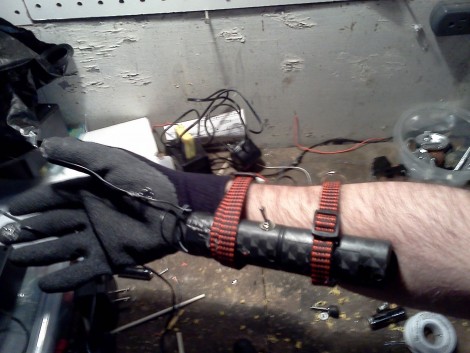Not many creatures are as universally despised as mosquitoes, whether it’s the harmless kind that, at worst, makes you miss winter, or the more serious ones that can be a real threat to your health. A satisfying way to deal with them is to send them off with a bang using one of those racket-shaped high voltage metal mesh bug zappers. [lmu34] saw big potential for some additional gamification here, and decided to equip his zapper with a kill counter and matching sound effects.
The initial thought was that there has to be a way to detect when a mosquito hits the mesh, and use that to trigger further events — in [lmu34]’s case play a sound file and increment a counter. After taking the zapper apart and doing a bit of research, he put theory into practice using a Digispark Pro board containing an ATtiny167, the DFPlayer module for playing a set of WAV files, and an ambitious four digit 7-segment display to keep track of the “score”. A new 3d-printed cover provided enough space to house all the components, including a charging circuit as he swapped the original two AAA batteries with a rechargeable one, which gave a bit more power for the display.
Of course, with these operation voltages, it would be difficult to detect activity on the high voltage side more than once, so [lmu34] went with current sensing instead. He distinguishes between two different levels here and maps them as normal kill and monster kill for the big zaps respectively, playing different sounds for each. Have a look at the video after the break for some quick demonstration.
All in all, this is a delightfully absurd modification that almost screams for an ESP32 to enable multiplayer mode as next iteration. But if chasing mosquitoes with low-tech gadgets isn’t for you, there’s always lasers and good old torture, although those can’t be repurposed to do some hardware fault injections during the winter months then.
Continue reading “Bug Zapper Counts And Serenades Its Victims”
















